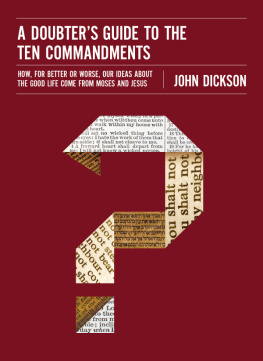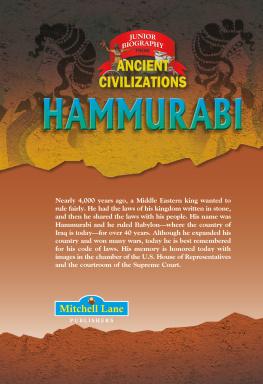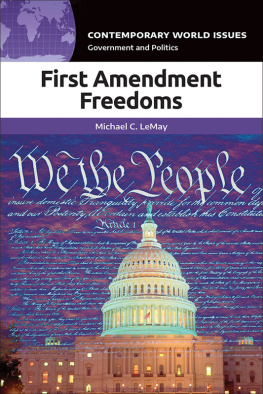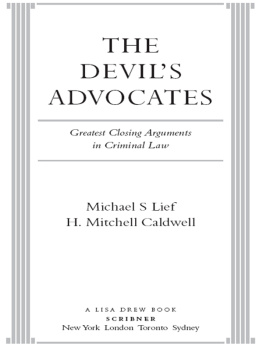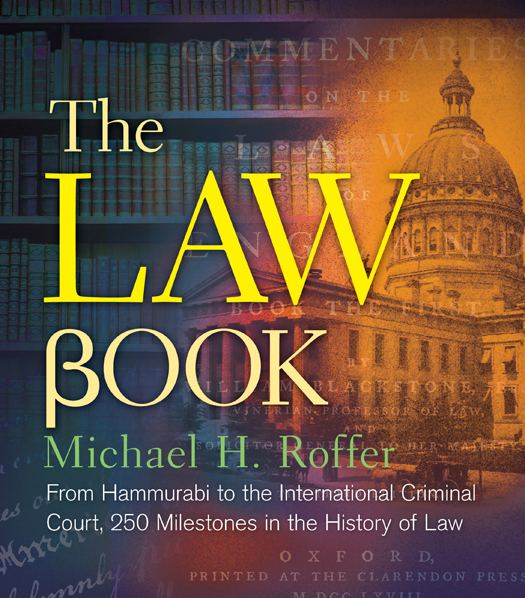F ROM H AMMURABI TO THE I NTERNATIONAL C RIMINAL C OURT , 250 M ILESTONES IN THE H ISTORY OF L AW
Michael H. Roffer
STERLING and the distinctive Sterling logo are registered trademarks of Sterling Publishing Co., Inc.
2015 by Michael H. Roffer
All rights reserved. No part of this publication may be reproduced, stored in a retrieval system, or transmitted in any form or by any means
(including electronic, mechanical, photocopying, recording, or otherwise)
without prior written permission from the publisher.
For information about custom editions, special sales, and premium and corporate purchases, please contact Sterling Special Sales at 800-805-5489 or specialsales@sterlingpublishing.com.
Introduction
The law surrounds us. It affects the food we eat, the water we drink, and the air we breathe. It travels with us. It defines our relationships with the people with whom we live, work, and share space. It affects our homes and schools, our offices and stores. The law touches every aspect of our lives and even our deaths. This book explains how much of that came to pass.
Historians trace the first formal compilation of laws to King Ur-Nammu of Sumer, circa 2100 BCE. Several centuries thereafter came King Hammurabis better-known code, famous for its retributive eye for an eye. Later notable laws include the Ten Commandments, the Laws of Solon, the Twelve Tables of Roman law, and the Justinian Code. English laws existed prior to the Norman Conquest in 1066, but their development in the context of modern law began with the Magna Carta in 1215 and its implementation through the Statutes of Westminster (I and II) in 1275 and 1285. Anglo-American law began to take shape in the American colonies in the early 1600s, which laid the foundation for the Constitution in 1787.
Over the centuries that followed, American law took root. As it developed and matured, two competing principles emerged: stability and change. The law provides stability in a changing world, and a world in flux changes the law to maintain stability. A hallmark of the American tradition, precedents typically serve as the basis for judicial decisions. As Supreme Court Justice Benjamin Cardozo observed, What has once been settled by a precedent will not be unsettled overnight, for certainty and uniformity are gains not lightly to be sacrificed. Yet the law does change. Slavery was permitted and then outlawed; the death penalty was barred and then reinstated; books were banned and then constitutionally protected. Dramatic changes like these sometimes may seem inconsistent, but they embody legal scholar Roscoe Pounds aphorism that the law must be stable, and yet it cannot stand still.
Ive taken an eclectic approach in compiling the 250 milestones in this book. As youll see, my choices fall predominantly within the American tradition, and the majority of the essays focus on the last two centuries, which intentionally reflects the laws steady expansion over time and more recent explosive growth. Some essays embody key court decisions while others examine important statutes. Many deal with events that have become a part of historyincluding infamous trialsand several speak to key texts that have shaped legal thought and theory.
Foundational texts, including the Assize of Clarendon and the Magna Carta, laid the historical groundwork for many of the procedural protections that safeguard against overzealous enforcement of laws and the encroachments of political power in the courtroom, or they proscribe various forms of discrimination. Slavery legislation evolved from a codification of practices in the Black Code of Louis XIV to worldwide abolition two centuries later. Women began their long, legal struggle for recognition and fairness first at the Illinois bar in the early 1870s, then in factories, at the voting booth, and in the courtroom, where they defended their right to bodily privacy and staved off social discrimination. The concept of a right to privacy originated in an 1890 law review article, evolving to encompass regulation of access to contraception and birth control and play a key role in the long-fought battle over gay marriage.
Copyright law emerged to protect the rights of authors and other creators and later defined the nature and limits of fair use. Laws regulating the nature of expression developed to permit seditious speech, to block words that incite danger, and to allow obscenity and indecency but also to allow the government to regulate the public exposure to obscenity and indecency.
In the realm of the workplace, labor unions gained legal recognition in 1842, but it took nearly a century for employees and unions to level the playing field with employers through collective bargaining. Congress also enacted legislation providing fair treatment and fair pay for workers along with additional workplace protections. In the overlapping sphere of finance, the law has played an important role in regulating money. Britain adopted historys first income tax statute in 1799, but not until 1913 did Americas first permanent income tax hit the books. A decade and a half later, Wall Street crashed, triggering the Great Depression and a raft of regulations that Congress bolstered and amplified some seventy-five years later when the collapse of the subprime mortgage market prompted the Great Recession.
Many of the other milestones reflect laws aimed at protecting individuals from the conduct of others, but sometimes they aim to protect people from themselves. Blue laws existed in antiquity, but more recent legislation targeted gin, opium, alcohol in general, and tobacco.
Many laws spurred infamous trials, including the Salem Witchcraft Trials, the Communist witch hunt that led to the HUAC hearings of the Hollywood Ten, and the O. J. Simpson trial, which officially heralded the age of courtroom television.
The law is all-inclusive and far-ranging. As such, Ive tried to capture that breadth with a representative sampling of important topics with broad appeal. But these 250 milestones cannot be taken as the 250 landmarks of legal history. Reasonable minds will disagree on the importance of specific legal events and developments and their role in the pantheon of legal history, and milestones resonate differently in various places. But of these milestones, most have effected profound changefor good or for badand each reflects a new, historical structure or path on the legal landscape.
My goal wasnt just to introduce some of the most meaningful and influential steps in legal history but also to explain why a particular step became a milestone. Some will be obvious; others more subtle. I also aimed to supply a basic understanding of what have become fundamental legal principles and ultimately connect the dots between the principles and their relevant landmarks. These encounters all will be brief and none comprehensive. Indeed, most barely scratch the surface of issues to which judges and scholars have devoted and continue to devote a great deal of thought, energy, and writing. But hopefully the essays and their accompanying imagery will pique your curiosity and entice you to delve deeper into areas you find relevant or compelling.


